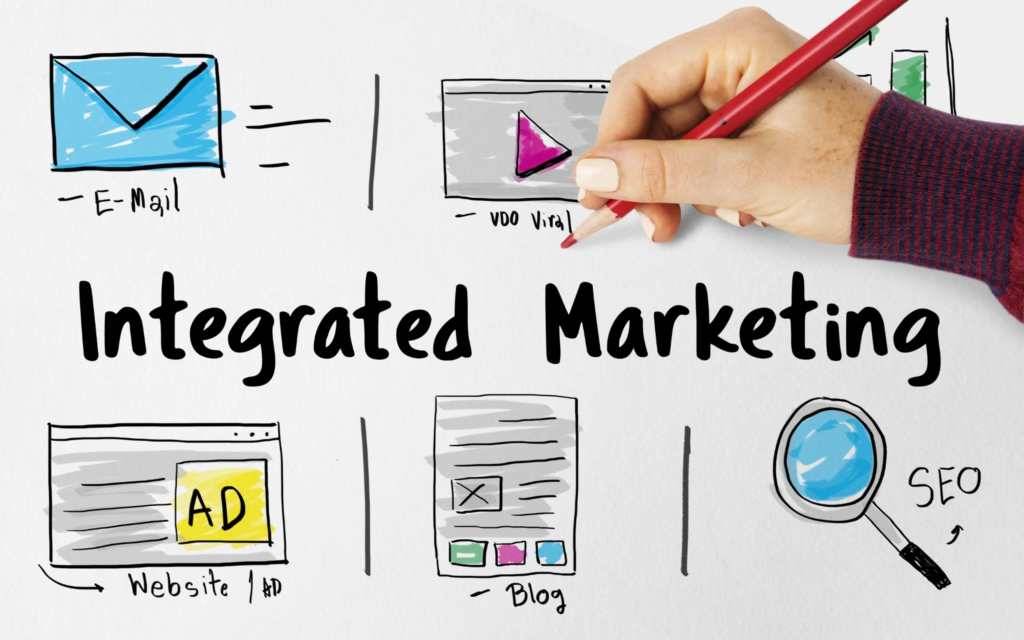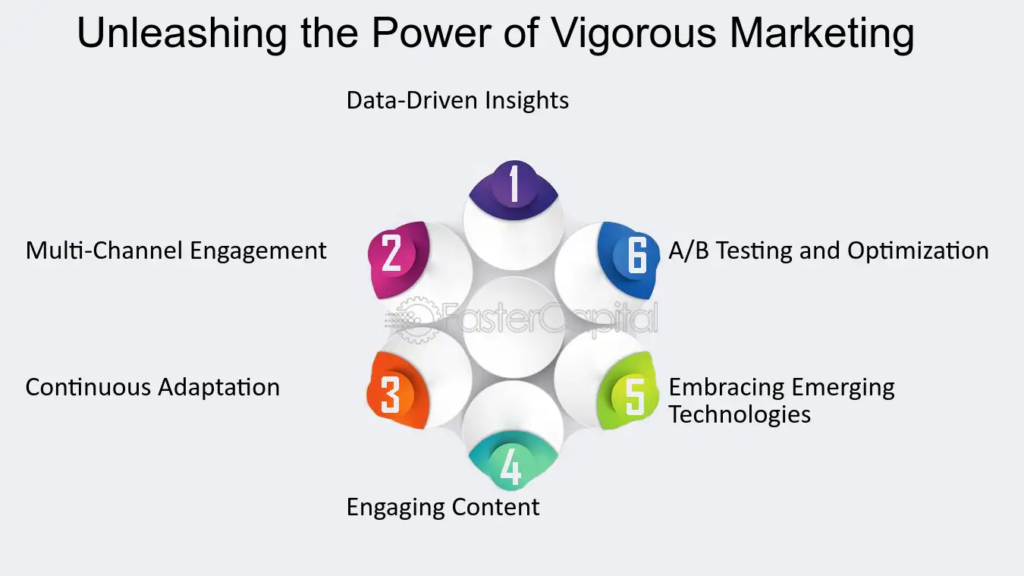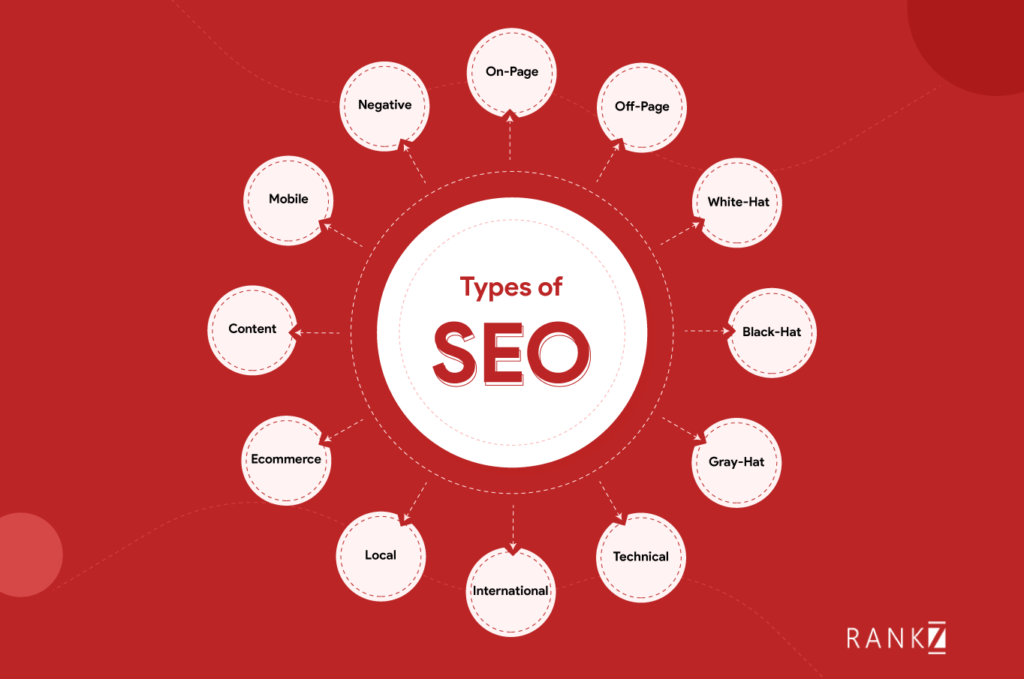
The Convergence of Digital and Traditional Marketing
Introduction
Businesses must blend digital and traditional marketing techniques in today’s fast-changing marketing landscape. Organizations may increase reach, efficacy, and ROI by combining both channels.
Benefits of Integration
Integrating digital and traditional marketing offers a multitude of benefits, including:
- Increased Reach: By utilizing multiple channels, businesses can reach a wider audience and increase brand awareness.
- Enhanced Effectiveness: Digital channels provide data-driven insights that can be used to optimize traditional marketing efforts, making them more targeted and impactful.
- Cost Savings: Integrated campaigns can often be more cost-effective than relying solely on either digital or traditional marketing alone.
- Improved Customer Experience: A cohesive brand experience across all channels builds trust and loyalty among customers.
Example of Integration
Nike’s new running shoe campaign used integrated marketing successfully. The campaign combined social media, email marketing, and print advertising , and billboards to provide consumers with a complete and engaging experience.
- Digital Channels: Nike created a dedicated landing page for the shoes, showcasing product features and customer testimonials. They also ran targeted social media ads and used email marketing to generate excitement and drive traffic to the landing page.
- Traditional Channels: Nike placed print ads in fitness magazines and displayed billboards in high-traffic areas. These traditional channels helped to raise awareness and build brand visibility.
By integrating digital and traditional channels, Nike was able to reach a wider audience, generate more leads, and drive sales for their new running shoes.
Digital Marketing Techniques to Enhance Traditional Marketing

Digital marketing techniques offer a wealth of opportunities to enhance the effectiveness of traditional marketing efforts. By leveraging these techniques, businesses can make their traditional marketing campaigns more targeted, measurable, and engaging.
Content Creation
Quality content is vital for digital and conventional marketing. Businesses may develop trust, thought leadership, and engagement by creating engaging content. Distribution channels for this content include:
- Blog posts
- Articles
- Infographics
- Videos
- Social media posts
Search Engine Optimization (SEO)

SEO improves search engine rankings by improving webpages and content. Businesses can boost their chances of being found by potential clients searching for similar products or services by using relevant keywords and optimizing website structure.
Social Media Marketing
Social media platforms provide a powerful way to connect with customers, build relationships, and promote products or services. Businesses can use social media to:
- Share valuable content
- Engage with followers
- Run targeted ads
- Drive traffic to their website
Email Marketing
Email marketing remains an effective way to nurture leads, promote products or services, and build customer loyalty. Businesses can use email marketing to:
- Send newsletters
- Offer exclusive promotions
- Provide personalized recommendations
By integrating digital marketing techniques into their traditional marketing campaigns, businesses can enhance their reach, engagement, and overall effectiveness.
Example
Digital marketing can boost print advertising for a small restaurant. The restaurant may add menu, promotions, and location information to their print ads by inserting a QR code that links to a mobile-friendly landing page. The QR code tracks website visitors, making the print ad more dynamic and engaging. The restaurant can also evaluate their campaign.
Traditional Marketing Techniques to Complement Digital Marketing

While digital marketing has become increasingly important, traditional marketing techniques still play a vital role in many marketing campaigns. Traditional marketing channels can be used to reach specific target audiences, build brand awareness, and drive sales.
Print Advertising
Print advertising, such as magazine ads and billboards, can be effective for reaching specific target audiences. For example, a local business might place an ad in a community magazine to reach potential customers in their area.
Direct Mail
Direct mail campaigns, such as postcards and brochures, can be used to target specific individuals or households. This can be an effective way to reach people who are not active on digital channels.
Events
Events, such as trade shows and conferences, provide opportunities to connect with potential customers face-to-face. Businesses can use events to showcase their products or services, generate leads, and build relationships.
Public Relations
Public relations (PR) involves managing the flow of information between an organization and its publics. PR can be used to generate positive media coverage, build relationships with key influencers, and enhance brand reputation.
Example
Traditional marketing can complement digital marketing for a tech company. A new product launch event can excite potential buyers. PR can also assist them in getting tech newspaper attention, earning credibility,, and expanding their audience.
Businesses can reach more people and get better results by incorporating traditional marketing methods into their digital marketing strategies.
Integration Strategies for Digital and Traditional Marketing
To effectively integrate digital and traditional marketing, businesses need to develop a comprehensive strategy that aligns their goals, channels, and messaging. Here are some key steps to consider:
1. Define Your Goals:
Clearly define the specific goals you want to achieve with your integrated marketing campaign. This could include increasing brand awareness, generating leads, or driving sales.
2. Identify Your Target Audience:
Determine the specific audience you want to reach with your marketing message. Consider their demographics, interests, and behaviors.
3. Choose the Right Channels:
Select the most appropriate digital and traditional channels to reach your target audience. Consider the strengths and weaknesses of each channel and how they can complement each other.
4. Create cohesive messaging:
Develop a consistent brand message that resonates across all channels. Ensure that your messaging is clear, concise, and relevant to your target audience.
5. Optimize for each channel:
While your messaging should be consistent, it should also be optimized for each specific channel. For example, social media posts should be concise and visually appealing, while blog posts can be more in-depth and informative.
6. Track and Analyze Results:
Regularly track and analyze the results of your integrated marketing campaign. This will help you identify what’s working and what’s not, so you can make the necessary adjustments.
Example
A fashion retailer can integrate digital and traditional marketing to launch a new clothing line. They could:
- Create a dedicated landing page on their website showcasing the new line.
- Run targeted social media ads to promote the line to their followers.
- Place print ads in fashion magazines to reach a wider audience.
- Host a launch event at their flagship store to generate buzz and excitement.
By integrating digital and traditional channels, the retailer can create a comprehensive campaign that reaches a wider audience and drives sales for the new clothing line.
Case Studies of Integrated Marketing Success
Example 1: Nike’s “Find Your Greatness” Campaign
Nike’s “Find Your Greatness” campaign exemplifies integrated marketing. The advertisement reached a global audience and inspired fitness objectives through digital and traditional methods.
- Digital Channels: Nike created a dedicated website for the campaign, which featured inspiring stories, training tips, and product information. They also ran targeted social media ads and used email marketing to promote the campaign.
- Traditional Channels: Nike placed print ads in fitness magazines and billboards in high-traffic areas. They also sponsored major sporting events and partnered with celebrity athletes.
Nike reached many people and inspired them by merging digital and traditional media. The campaign raised brand awareness, online traffic, and sales.
Example 2: Coca-Cola’s “Share a Coke” Campaign
Coca-Cola’s “Share a Coke” campaign is another successful integrated marketing campaign. Digital and traditional platforms were used to engage consumers and promote the brand.
- Digital Channels: Coca-Cola created a microsite for the campaign, where consumers could create personalized Coke bottles with their own names or the names of their friends. They also ran targeted social media ads and used email marketing to promote the campaign.
- Traditional Channels: Coca-Cola placed print ads in magazines and newspapers, and they also displayed billboards and posters in public spaces. They also partnered with retailers to create in-store displays.
Coke used digital and traditional means to promote the campaign and get people to post their personalized Coke bottles on social media. Brand awareness, sales, and social media involvement grew during the campaign.
Integration of digital and conventional marketing creates successful and impactful campaigns, as shown in these case studies. Businesses may engage customers, reach more people, and get results by using both media.
Measurement and Analytics for Integrated Marketing
Measuring and analyzing the results of your integrated marketing campaign is essential to ensuring that it is meeting your goals and delivering a positive return on investment (ROI). Here are some key metrics to track:
Website Traffic: Track the number of visitors to your website from different channels, including organic search, paid search, social media, and email marketing. This will help you understand which channels are driving the most traffic to your site.
Lead Generation: Measure the number of leads generated from your integrated marketing campaign. This could include email sign-ups, form submissions, or phone calls.
Sales: Track the number of sales generated from your integrated marketing campaign. This will help you determine the ROI of your campaign and identify which channels are most effective at driving sales.
Brand Awareness: Monitor brand awareness metrics, such as social media mentions, website traffic, and search engine rankings. This will help you understand how your integrated marketing campaign is impacting your brand’s visibility and reputation.
Customer Engagement: Track customer engagement metrics, such as social media engagement, email open rates, and website bounce rates. This will help you understand how your target audience is interacting with your marketing content and identify areas for improvement.
Tools for Measurement and Analytics:
There are a variety of tools available to help you measure and analyze the results of your integrated marketing campaign, including:
- Google Analytics
- Google Search Console
- Social media analytics tools
- Email marketing analytics tools
- CRM systems
Tracking and analyzing your results lets you see what’s working and what’s not and alter your approach to boost ROI.
Conclusion
Businesses must combine digital and traditional marketing to compete in today’s competitive industry. Businesses may create more successful and interesting marketing campaigns that reach more people and get better results by combining both media.
